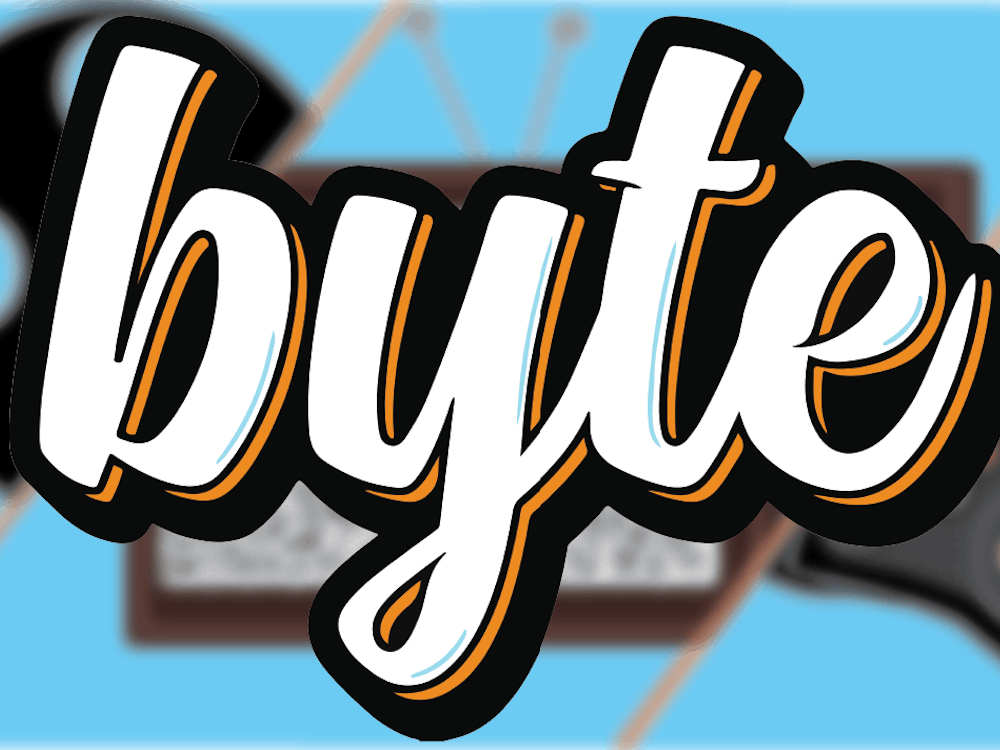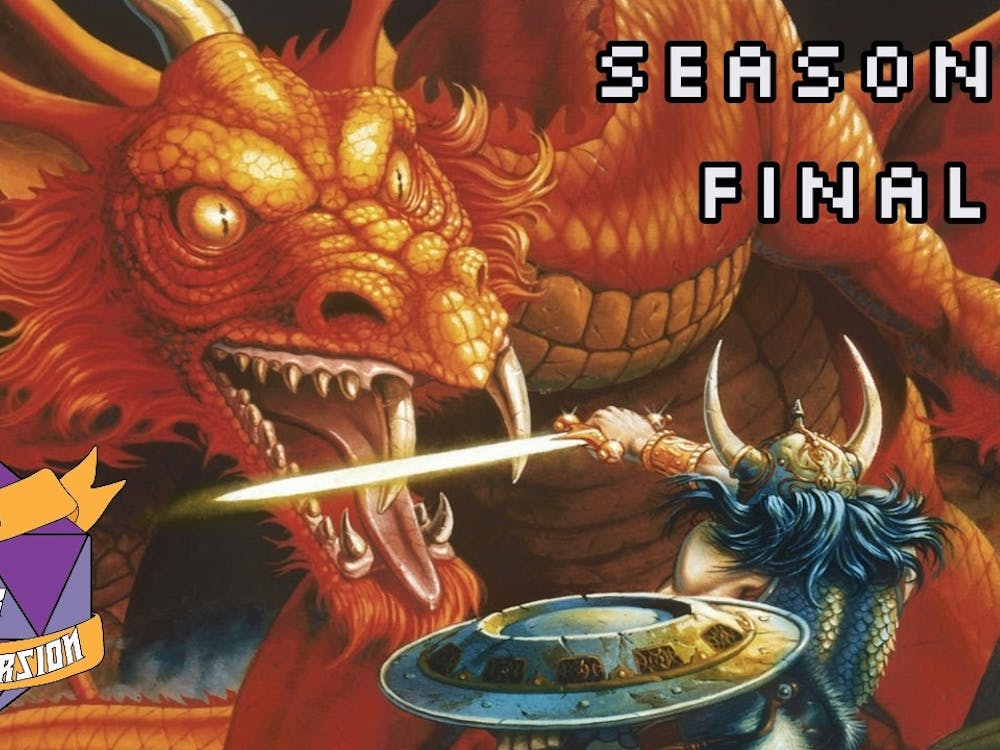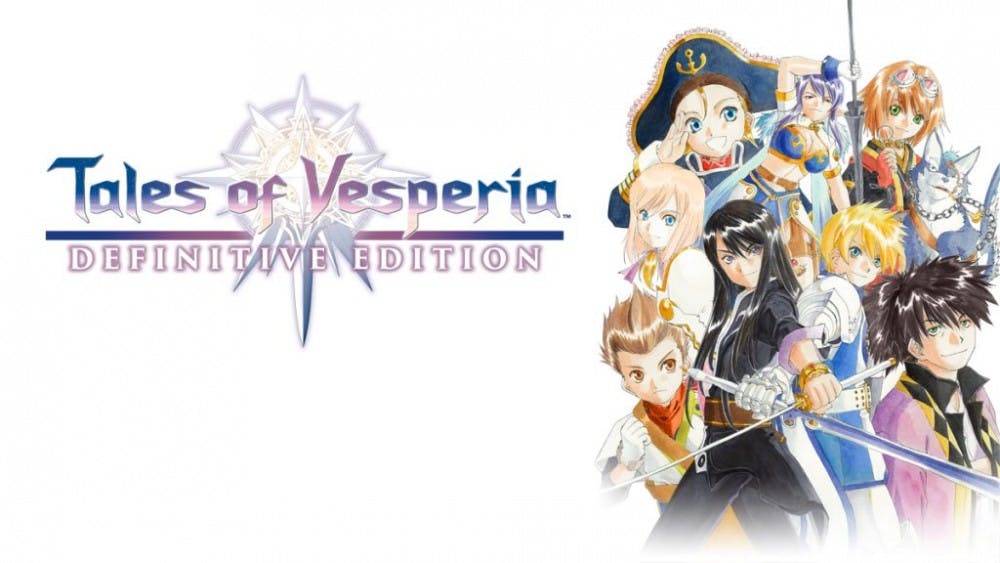Disclaimer: This review is of the Nintendo Switch version of the game, played primarily in handheld mode.
The Tales series is one of the longest standing Japanese role-playing game (JRPG) franchises. Starting with Tales of Phantasia on Super Famicom, the series was successful in Japan, but as with other storied franchises like Shin Megami Tensei, it didn’t get big in the West until the GameCube/PS2 era. Since then, the franchise has had a number of great games like Tales of Symphonia, Tales of Xillia, and the most recent entry with Tales of Berseria, but it still feels like they just blend into the background compared to bigger titles. So, it was a surprise to see Microsoft give a spotlight to Tales of Vesperia: Definitive Edition during their E3 showcase. It makes sense given that Vesperia was originally a 360 exclusive, but this release brings the Japan-exclusive PS3 port to all of the modern consoles for the first time.
After playing through much of the Nintendo Switch version of Vesperia, it’s safe to say that this is definitely one of the best Tales games out there. However, compared to other big JRPGs and even its own series, Vesperia is missing a hook to keep a player fully engaged.
A standard Tales tale
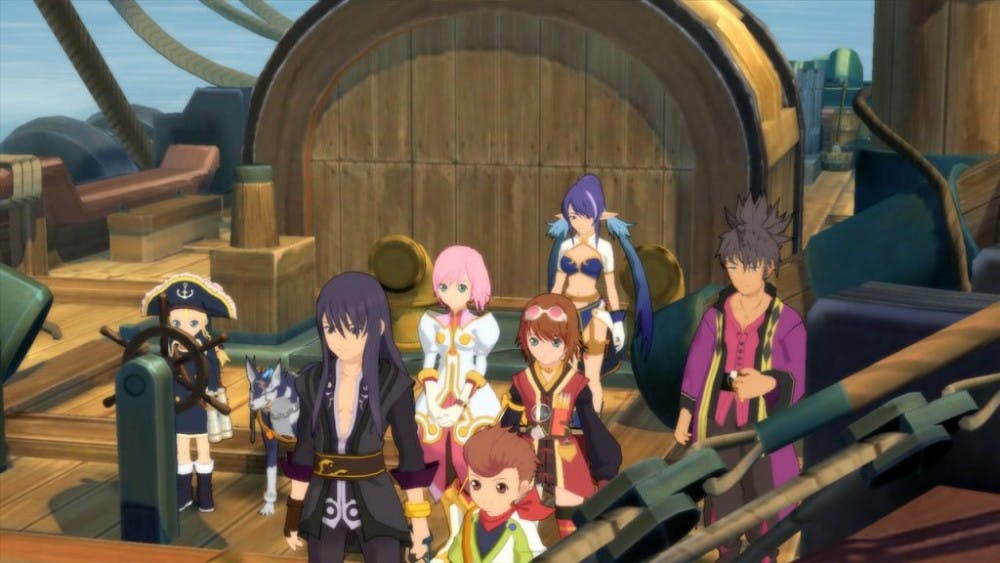
Image from Nintendo
Tales of Vesperia follows Yuri Lowell (voiced mostly by Troy Baker), a ruffian former knight who just wants to help his people in the slums of the capital city. After getting thrown into and promptly breaking out of jail, Yuri and the player get railroaded into an adventure that cannot be escaped. Along the way, he meets a cast of colorful Tales characters, including some real winners like Rita and Raven, and uncovers a conspiracy set to escalate a great war. It’s all well and good, and there are some fun character moments, but it never really gets to a point where I was like “Wow, I need to keep playing to see what happens next!” It just goes about its business, with next to no side quests to break up the main story.
I will say that, at the very least, the characters don’t get as obnoxious or make as many dumb decisions as other Tales casts, but they also aren’t particularly interesting. Sure, you can play as Yuri’s dog Repede, but it just feels that most characters in the game lack a strong, engaging personality. Yuri is probably the most complex character in terms of his motivations, but even then it can get a little tiring listening to Yuri be vague and mysterious for 15+ hours.
On top of that, the world in this game feels rather lifeless. You can talk to a bunch of different people in towns, but most of them don’t have much to say that isn’t already apparent. During the first story arc of the game, there is almost nothing to be gained by talking to civilians. I never would’ve expected side quests and side content to be such an important part of a JRPG, but without these options, the game just feels like it’s missing something. Sure, too many sidequests can be overwhelming, like in Xenoblade Chronicles, but the complete lack of them just makes it so the only way a player can gain EXP is through ol’ fashioned grinding. These side quests and side stories do begin to develop after the first story arc, but by then the railroading is just too powerful and seemingly inescapable. This may be a breath of fresh air to some, but for me it ended up just making me feel more bored than any fetch quest could.
Classic JRPG-style with a fresh coat of paint
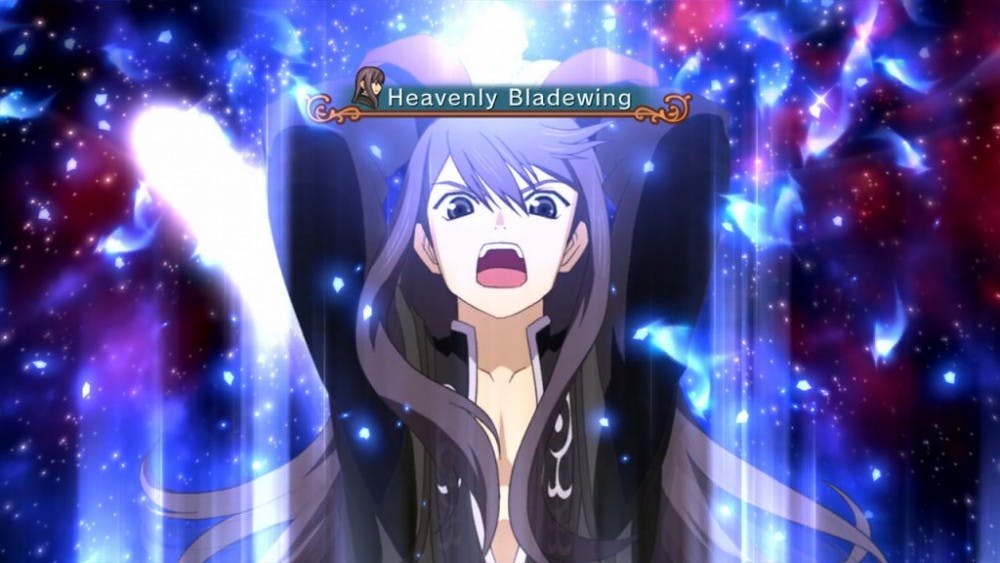
Image from Nintendo
Tales of Vesperia: Definitive Edition is gorgeous to look at, especially compared to its predecessors in Tales of Symphonia and Tales of the Abyss. It makes sense, considering this game was the jump from PS2 to Xbox 360, but it still holds up very well in the remake. The main cast has some of my favorite designs in the series, and the dungeons are all very detailed and great to explore. The towns in the game are also all varied in their designs, which makes their overall emptiness that much more apparent. Even when stacked up against Tales of Xillia, the game holds up by maintaining a silky smooth framerate in battles and cutscenes, only really tanking on the world map when playing on the Nintendo Switch in portable mode (The game’s framerate differs from system to system). The in-game models may be more simplistic, but it’s charming without hurting the overall quality.
The music in the game also has some earworms and stellar tracks, which is actually a surprise for the series. I usually don’t notice the soundtrack in Tales games, but this game had some great songs. The various battle themes are all wonderful, and the towns all have great music of their own. Sound design overall is pretty satisfying, with meaty hits being given appropriately meaty sounds. Plus, Vesperia has one of the best OPs in the series, only being beaten out by Zesteria’s incredible “White Light”, which was unironically the best part of that game.
The best and worst of Tales combat
Tales of Vesperia’s combat system is essentially just an improvement of the action combat style from Symphonia and Abyss, with all of the best parts of that system being left intact. Combos are quickly executed and flow nicely into all of the different kinds of artes, and with nine unique playable characters in the Definitive Edition, there’s a little something for everyone’s tastes in playstyle. I had the most fun playing as Karol, with his meaty hammer/axe attacks, and Rita, who uses her vast array of spells to one-shot weaker enemies, but most of the members of the party are fun to use as well. I didn’t really enjoy playing as Raven, but primarily ranged/trap-setter characters in Tales games have always been underwhelming to me.
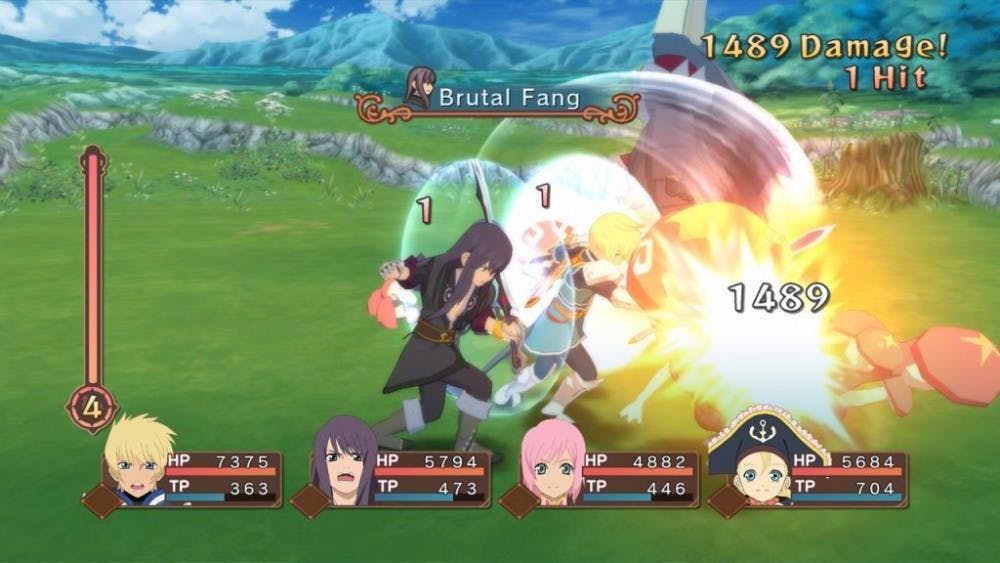
Image from Nintendo
However, there are also parts of the combat that show their age. Balance adjustments made to stunlocking and getting stunlocked are seemingly absent, with some solo fights against large groups of enemies ending in Yuri just getting slowly knifed to death 74 damage at a time. On the same coin, spellcasting at a fast enough rate (with your AI partners using their brains) can permastun some boss fights, which ends in some pretty anticlimactic battles even with the Overlimit system. Some boss fights also have special mechanics built within them that, when fulfilled, gives the player some kind of advantage. Some of these are rather straightforward, like baiting the enemy into stunning flowers, but others are a little less obvious. One boss in particular requires the player to play as a specific character, use a specific arte in a specific place at a specific time, otherwise the enemy will heal a fourth of their HP. If you don’t know that, you will end up trying to beat the boss by stunlocking it into submission which almost actually works before they put up stunlock immunity and heal to full.
On top of that, the quality of life addition of the “retry battle” button that was added in Tales of Xillia does not make an appearance in Vesperia. Although the game is at least generous with save points, there are a few tough battles placed in tough spots, either sandwiched between a bunch of cutscenes or after some unavoidable enemy encounters. It can lead to frustration, especially if the loss is to cheap stunlocking or cryptic special mechanics.
But, at the end of the day, it’s still great Tales combat. I’ve always been partial to the more freeform combat of Symphonia and Xillia, seeing the restrictions to combos made by Zesteria or Graces as a massive detriment, and this game has got some of the best of it. There aren’t too many games that allow you to take down massive golems and dragons as a dog with a tiny knife, but Vesperia delivers there. It’s just a shame the game around it is nowhere near as compelling as the combat is.
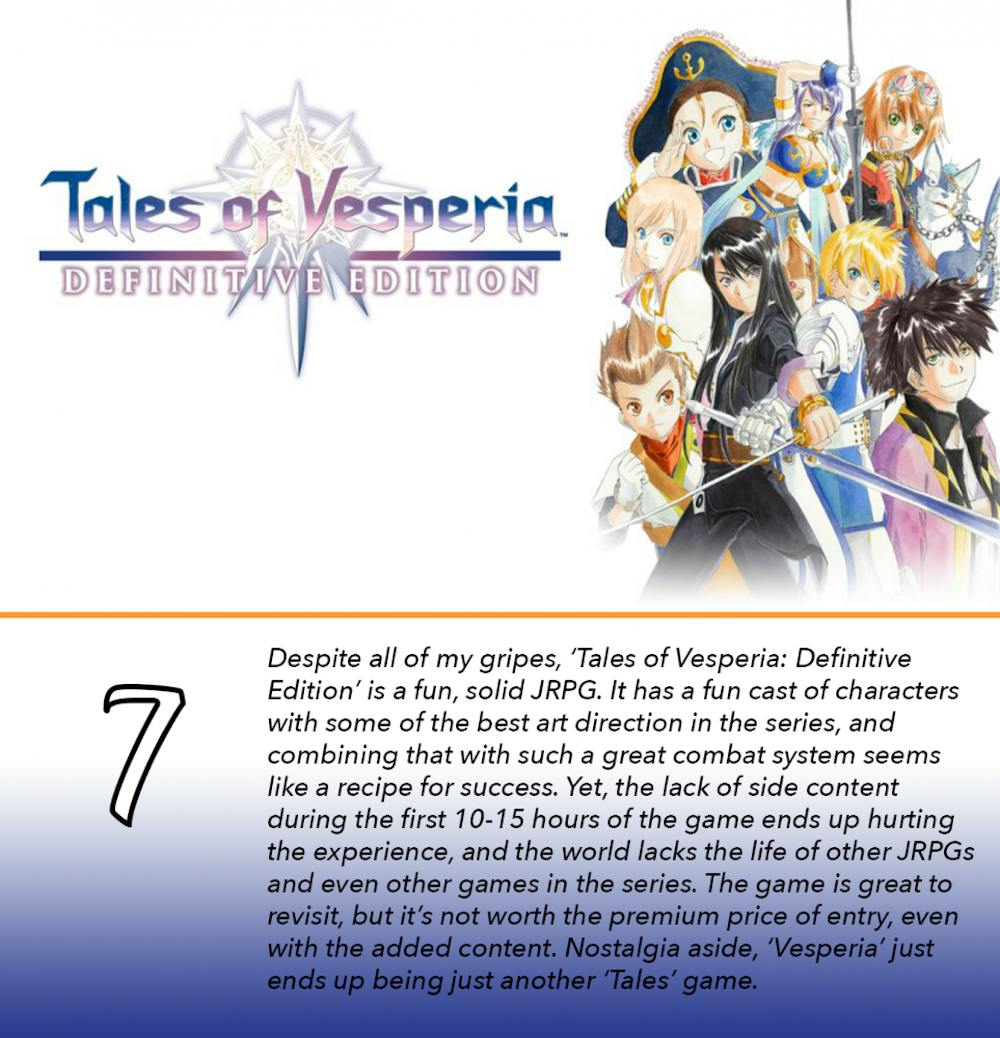
Featured Image: Nintendo
Images: Nintendo
For more entertainment related content, visit us at Byte BSU!













